The art styles in game refer to all the art in the game’s look, including the characters, lighting, colors, etc. As we all know, some games look different. There are two types of art styles for games, including 2D and 3D games, each with fans. The best 2D and 3D art styles for video games vary depending on the game’s concept, target audience, and technical requirements. The choice of style should complement the game’s genre, atmosphere, and gameplay. Here, we will define some 2D and 3D video game art styles, from 2D pixel art to 3D cartoon art.


Need Game Art Services?
Visit our Game Art Service page to see how we can help bring your ideas to life!
Game Art Styles
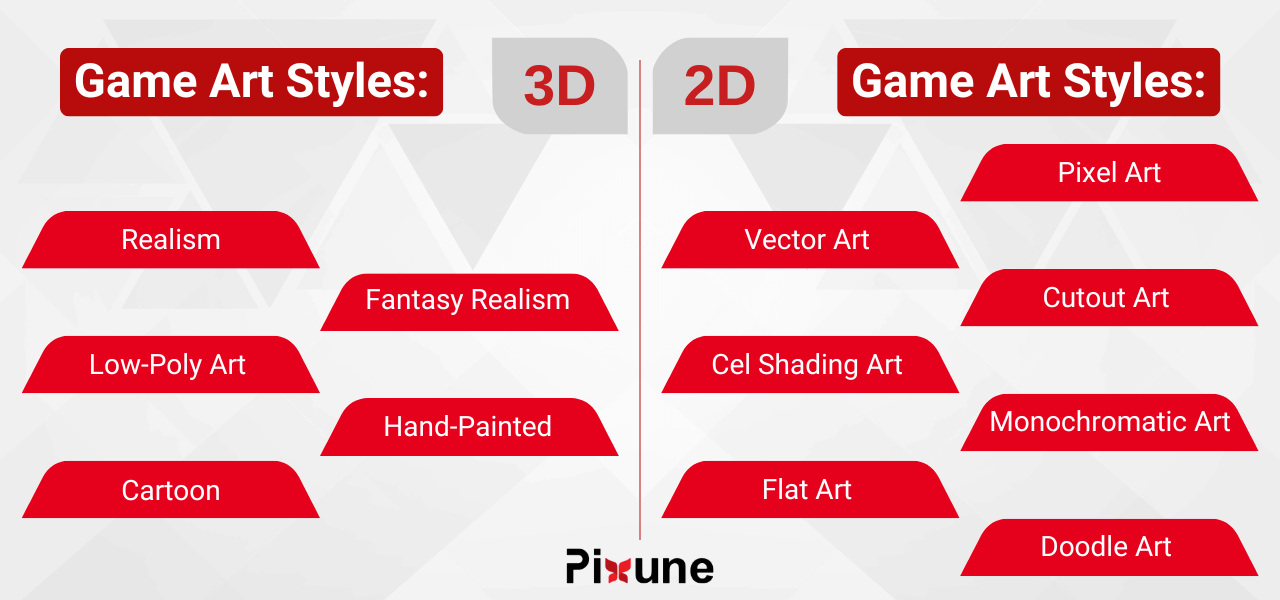
2D Game Art Styles
In the past, the graphic capabilities of software and hardware were so limited that games had simple shapes and a poor level of detail.
As the technology improved, designers could add much more creativity and variety to their 2D game art. It resulted in many different 2D art styles we see in games today.
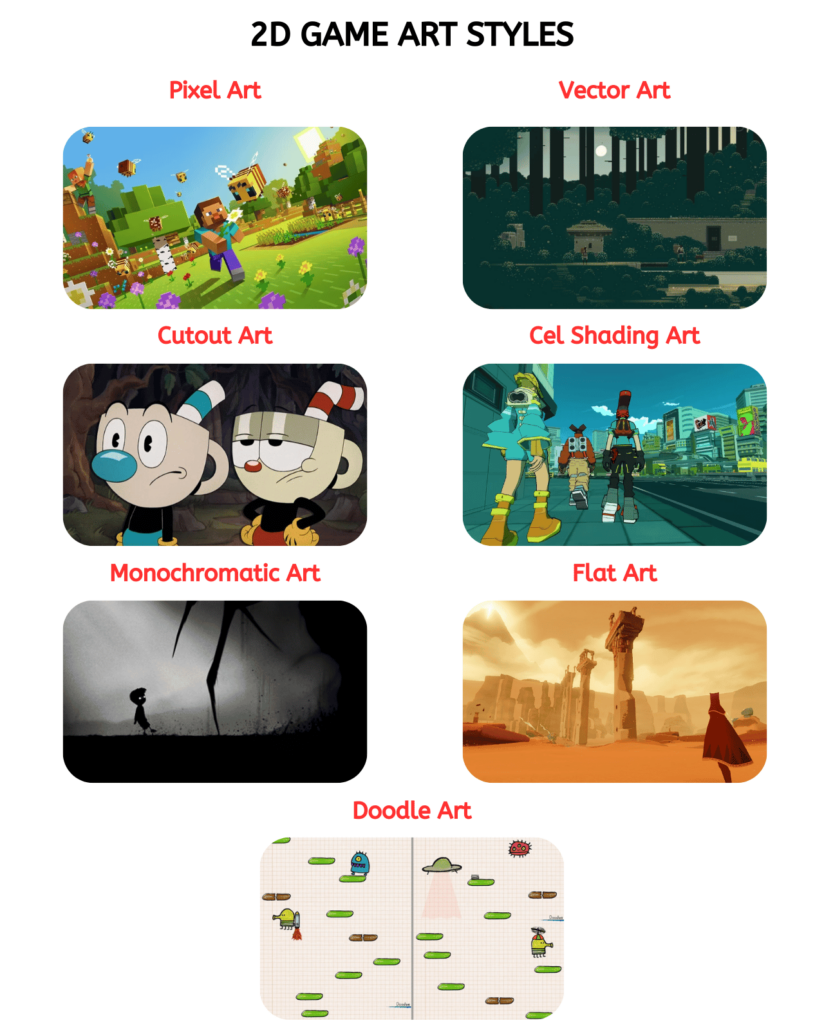
2D Pixel Art
Pixel art design is one of the most popular video game art styles in the field. Each pixel is a square or basic shape that makes up a tiny part of an object, character or set in a digital image.
Each object is typically a combination of hundreds or thousands of pixels. Pixel art animation reminds most people of early video games and old times, but it is still trendy. Minecraft and Undertable are some of the games made with modern 2D Pixel Art style.

Vector Art
Vector art is another primary game art style. Artists create vector imagery digitally through special-purpose programs. In this style, images are not split into pixels.
Programs designed for vector art creation rely on mathematical algorithms and store the data and color data in lines, dots, and polygons.
Vector art files have a smaller size than pixel-based ones and higher quality when zooming in and out on images. Red Alarm and Superbrothers are some of the games made with vector art style.
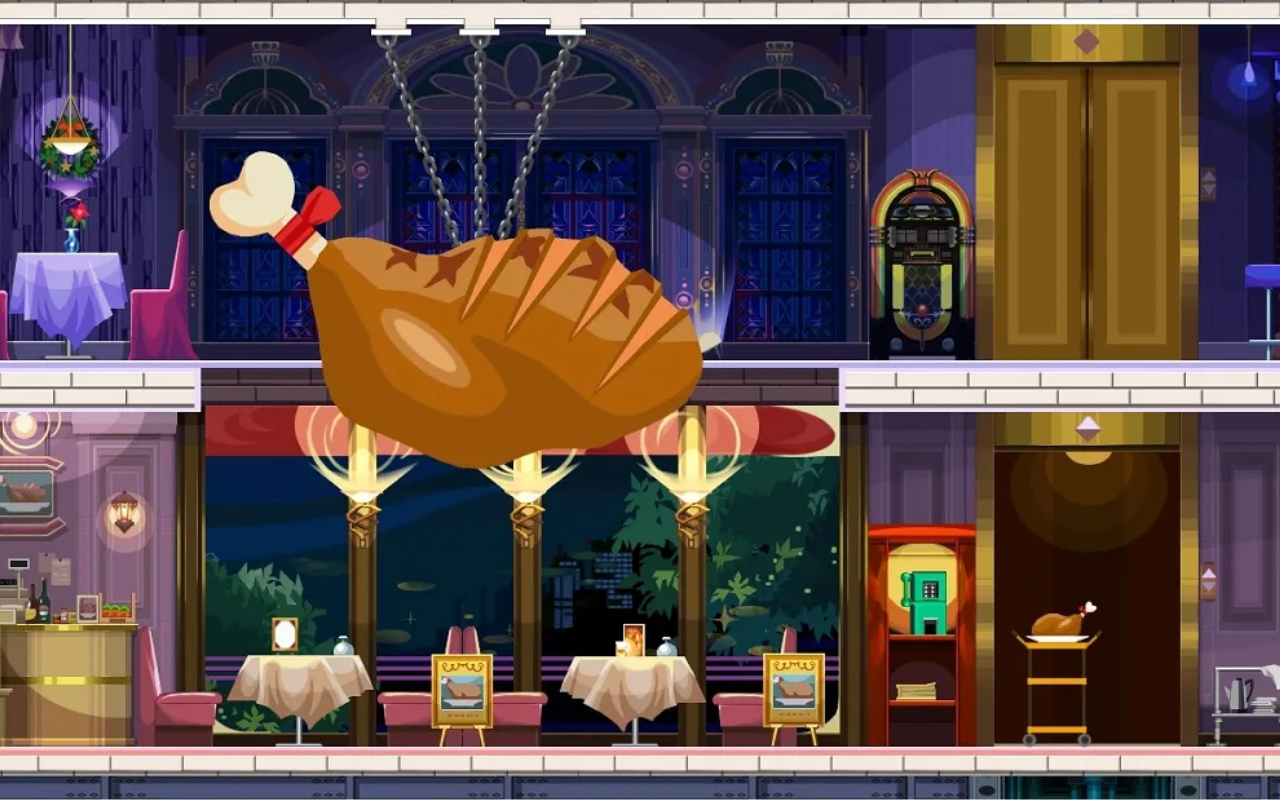
Cutout Art
Cutout art is a style mainly used in animation. This art style in games imitates pictures on paper, cut out, and imported into a new medium. Artists who create cutout art can import a digital asset of a character from real paper cutout art or create it on a computer.
The cutout images remain unchanging, but their positions are changed to show action and motion. State changes are simulated by instantly replacing an image with another cutout. Paper Mario and Cuphead are some of the games made with the cutout art style.
Cel Shading Art
This one is a relatively new game art style with a great influence on the community of game developers and dozens of successful examples. Artists use cel-shading to make 3D models and objects seem 2D, flat, and paper-like.
Imagine you are looking at an object, and it turns into a 3D model. Then, you put the way you see this 3D model from one angle on the paper, with just part of the object visible, and remove the depth. Jet Set Radio and Ōkami are some of the games made with cel shading art style.
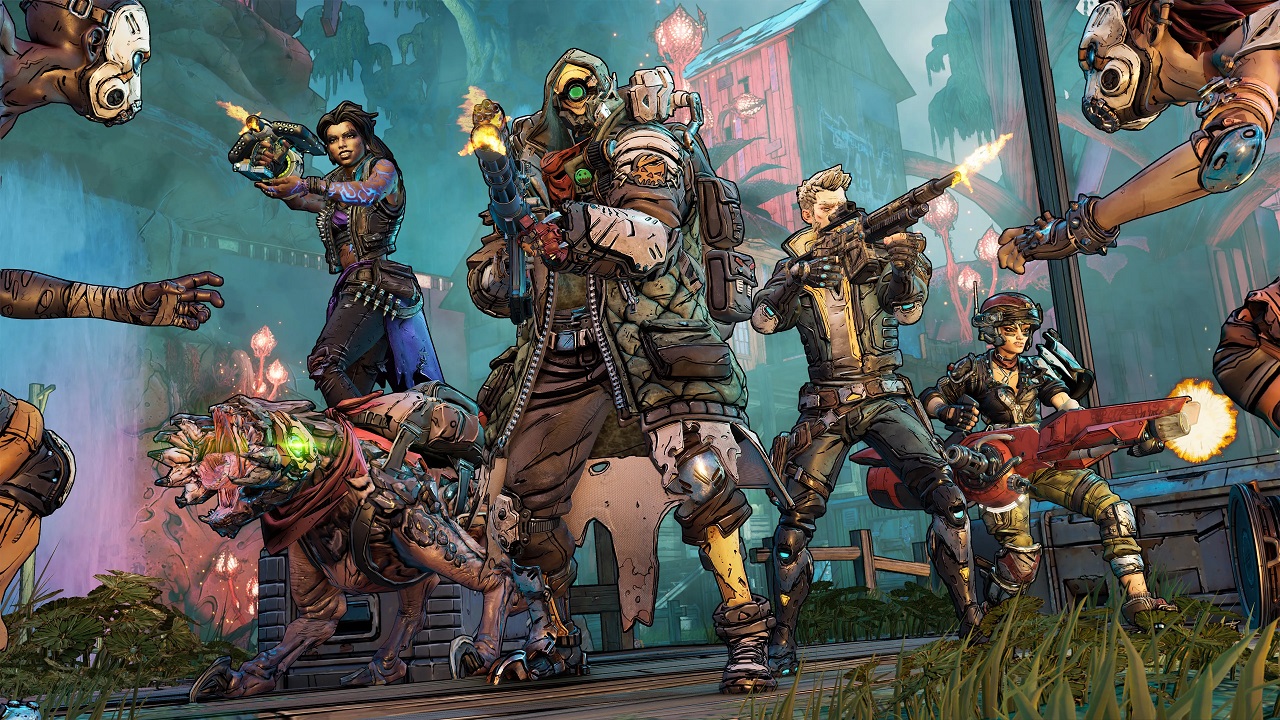
Monochromatic Art
There is no definition of a monochromatic art style that everyone agrees on. But we usually call an artwork monochromatic when it includes a minimal color palette, including 1 or 2 colors.
However, they use various shades and tints of chosen colors to distinguish between different parts of an image. The most common choice for creating monochromic art is black.
If black is the only chosen color, the artist designs most elements in black and differentiates the rest through white or shades of grey. Limbo and One Upon Light are some of the games made monochromatic.
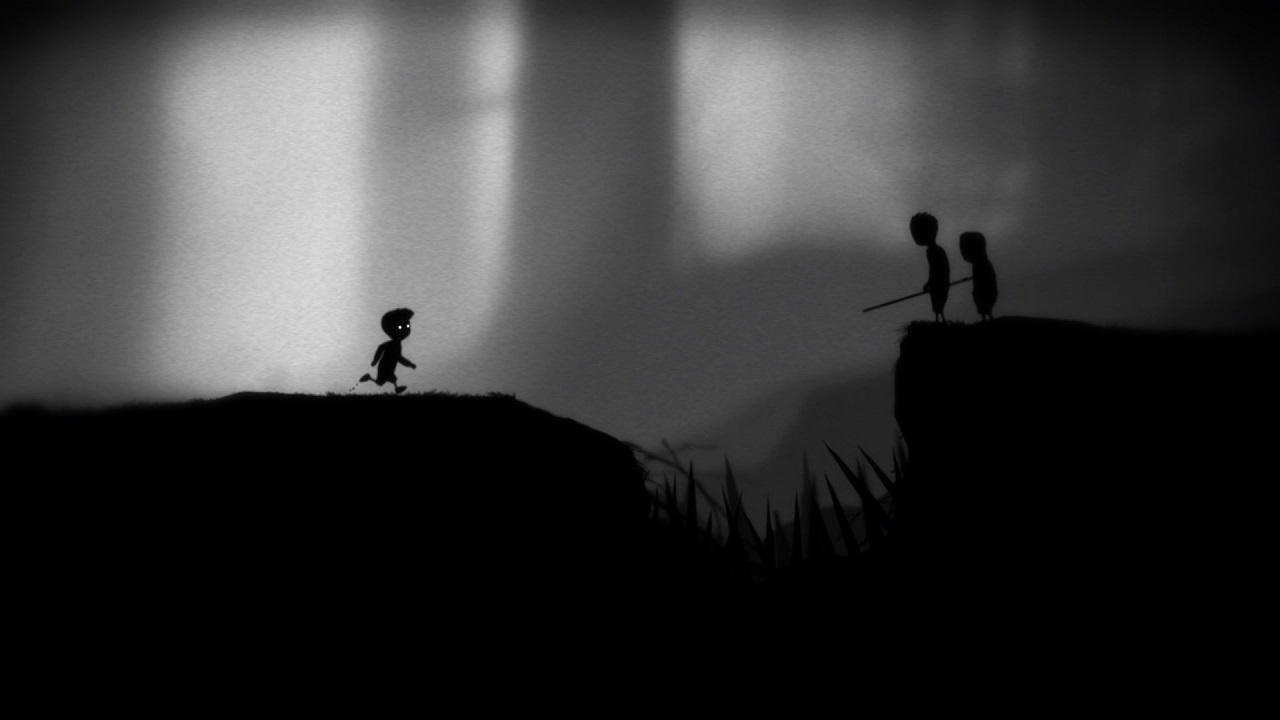
Flat Art
Objects, characters, and settings in games designed in a flat style are all presented without volume and depth. Artists designing these games are not dedicated to realism or physics at all.
It means that they have an incredible amount of artistic freedom in their work. Flat designs and models usually have unique looks and no common characteristics unless they borrow them from other video game art styles.
Journey and Crossy Road are some of the best examples of flat game art services.
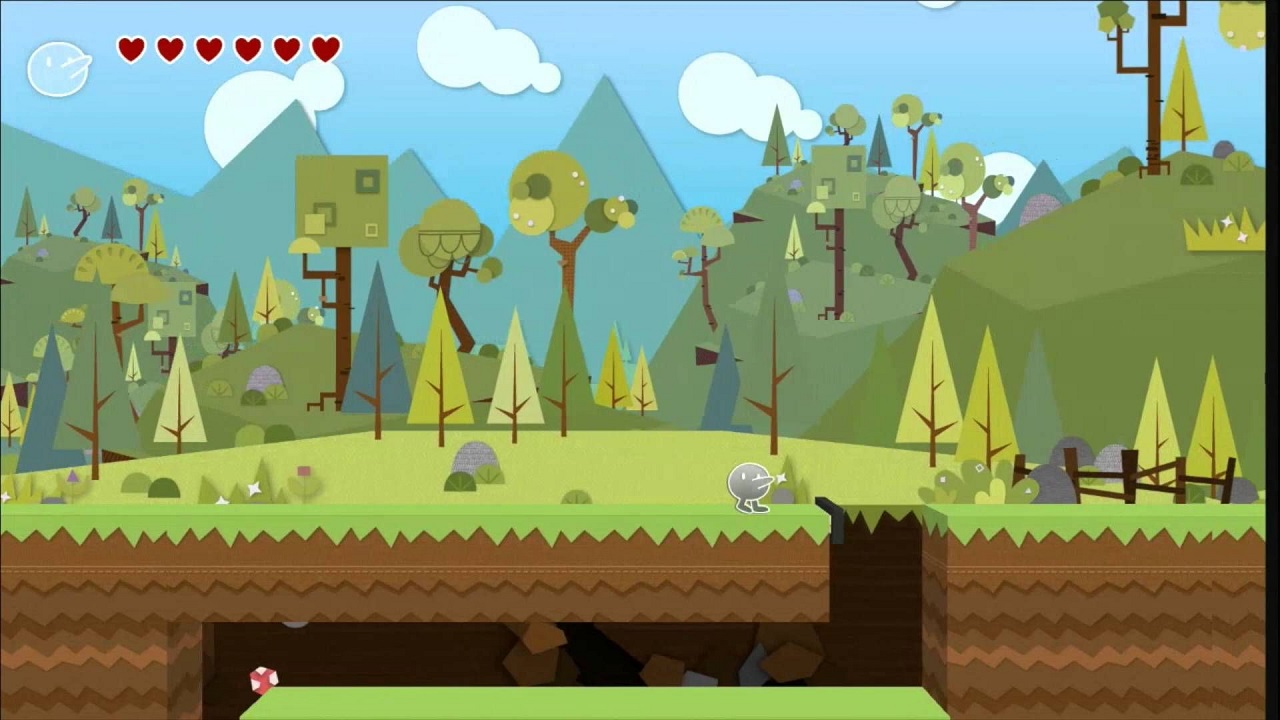
Doodle Art
Unlike the other game art styles, doodle art is defined by the actual content of the work and not by specific characteristics, resulting in a unique look. Doodling is drawing something when your focus is on other things. So, doodle images usually have a strange, abstract, and warped composition.
Doodles have a collage of unrelated characters and objects that appear together to occupy the available space. Doodles are hand-drawn art at first, then imported as digital assets. Doodle Jump and Doodle God have a doodle art style.
3D Game Art Styles
3D games came out ten years after the first 2D games. They soon became such popular that many thought the era of 2D games had ended. 2D game art styles are still popular, but the surprising popularity of 3D game art styles resulted in a dynamic and exponential improvement in 3D games.
The outcome of this improvement and popularity is too much competition in the 3D gaming market.
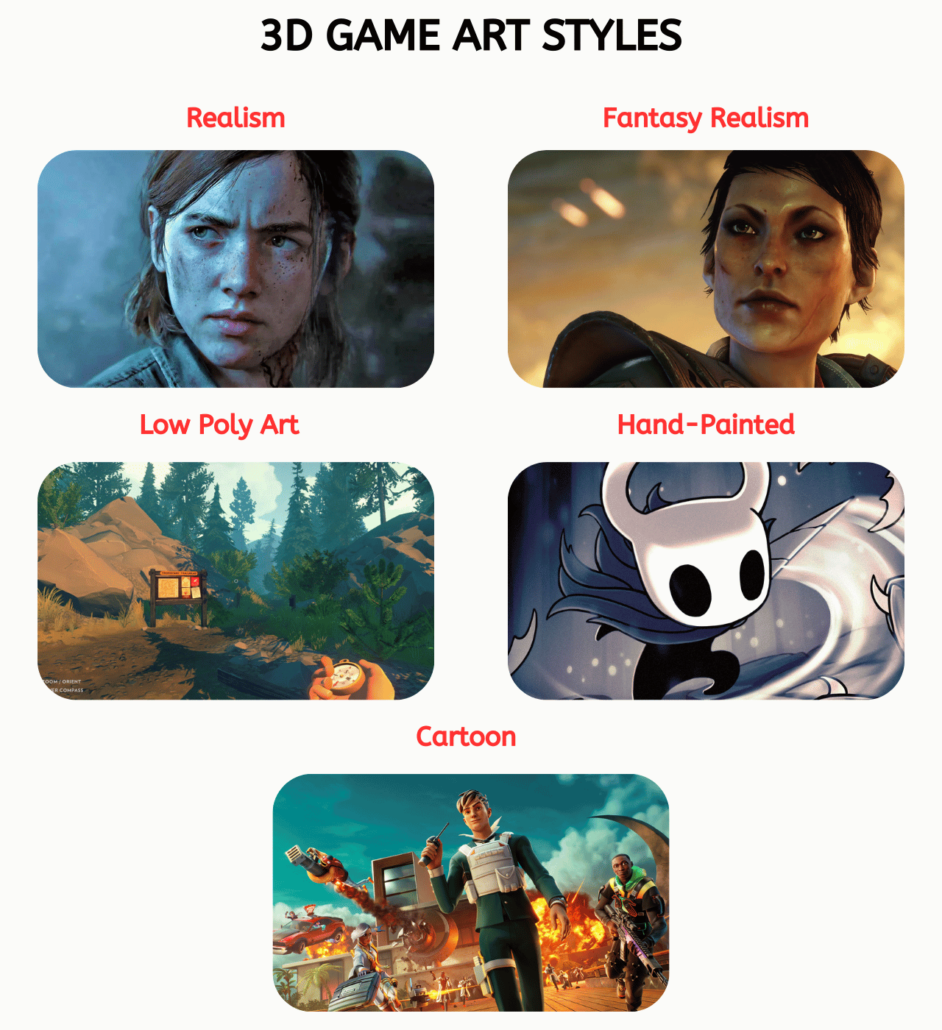
Realism
When creating realistic art, the artist brings graphics to look like reality as much as possible. Almost all top projects come out in this style. The setting, genre, and era can differ. Realism is mainly used in horror and survival games.
Some of the popular games made using realistic art style are:
- Red Dead Redemption 2
- The Last of Us Part II
- Assassin’s Creed
- Cyberpunk 2077
Read More: Realistic vs. Stylized
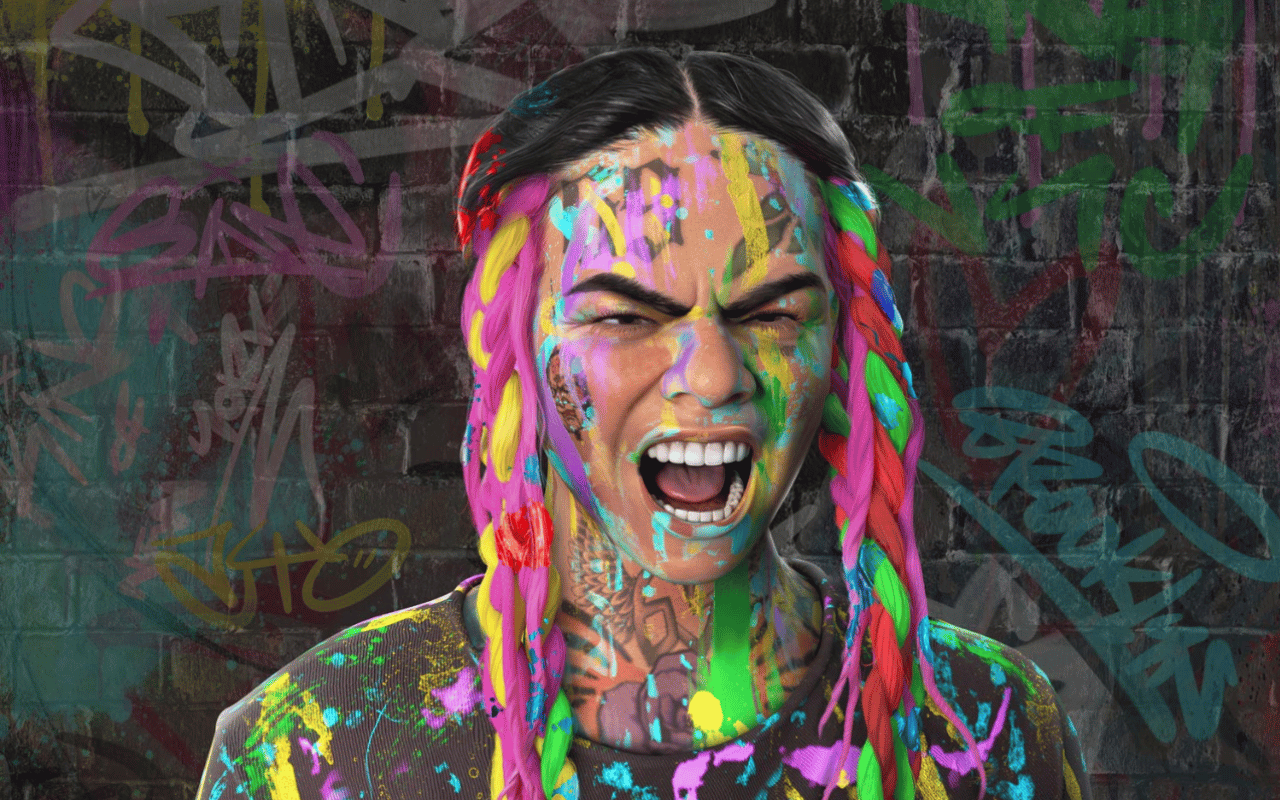
Fantasy Realism
The factors that separate this 3D art style from the previous one are its popularity and independence. This style includes any fantasy, science fiction, and steampunk setting that the game producer wants to look realistic, although it is impossible to exist in the real world.
Fantasy realism is also considered as a mobile game art style that is primarily suitable for creating adventure shooters, quests, and action/RPG games. Any game that needs a realistic but unreal setting and imagination without restrictions can be made using the fantasy realism style.
This style keeps players interested as it remains fresh and exciting. Dragon Age and The Witcher 3: Wild Hunt are some games made in the fantasy realism style.
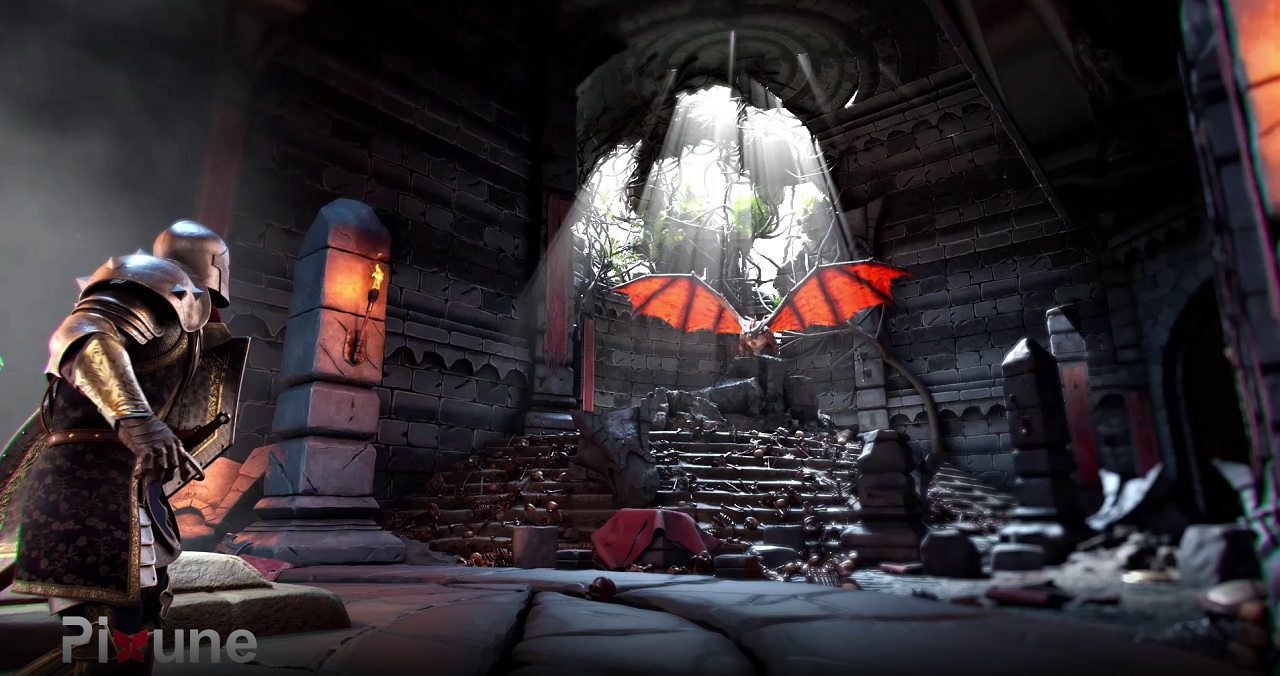
Low Poly Art
Low poly illustrations usually look like a bunch of triangles. Since each illustration element is created individually in this style, it is famous for its high labour intensity. In low poly, they do not use anti-aliasing, which means each polygon is visible. They also do not use textures and paint each polygon in one color.
The focus in low poly is on the materials and shape of the model and stage lightning. The number of polygons in this type of art often exceeds a million. So the word “low” in the name does not mean that the artwork has a low number of polygons. Gamers usually see low poly game art style mixed with other styles or modified in some way, not in its pure form.
The complexity of low poly artworks varies, but they are primarily minimal and pure. This style is what artists use in almost all genres, from shooter to strategy, when the most emphasis is on the plot or puzzle, not the graphics. Some of the games with low poly graphics are Firewatch and Walking Zombie 2.
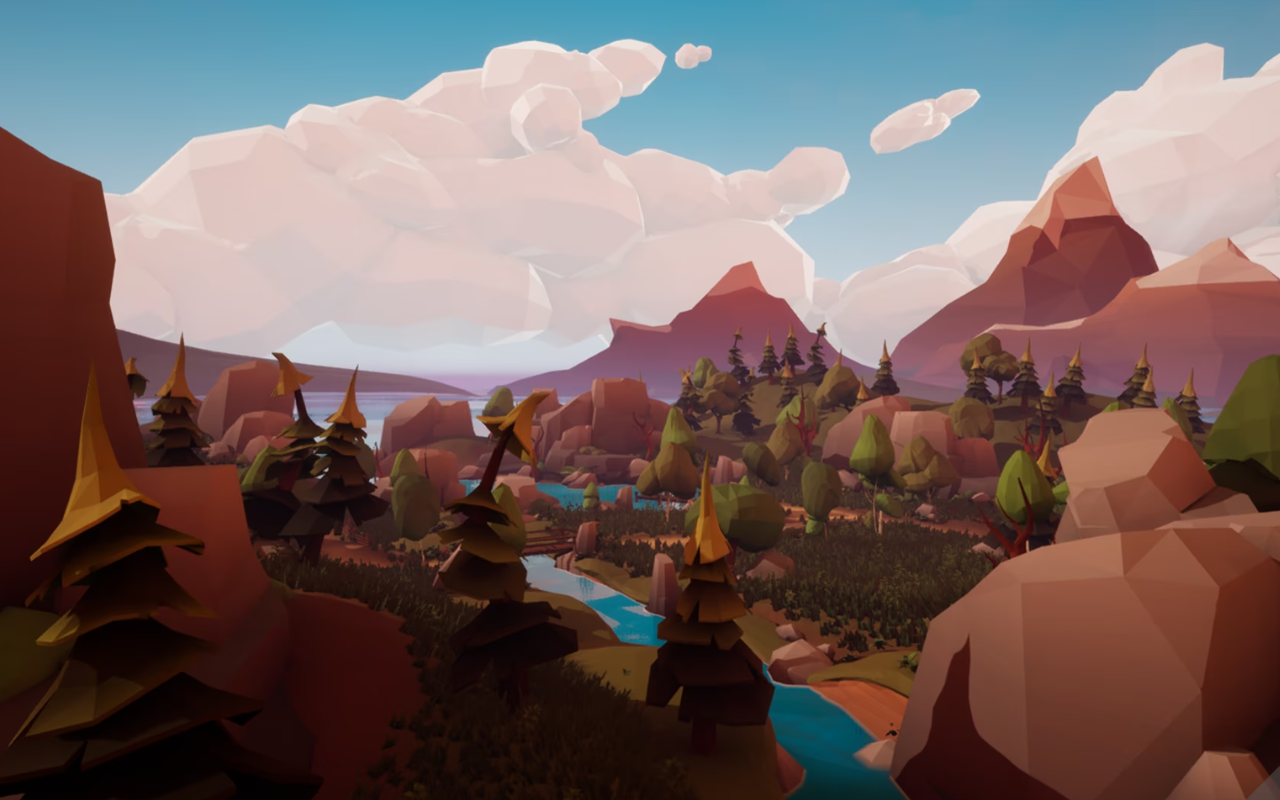
Hand-Painted
Hand-painted style is known for freehand texture painting. The artist draws all shadows, highlights, and sometimes small details on the texture without geometry. You might think this method is not popular now, but you can see it used in popular games like Dota and Warcraft.
The hand-painted textures in game is most often used in fantasy and strategy games. It is bright enough to engage the player and light enough not to overload the hardware. This style can be biased toward comics, cartoons, or realism if mixed with other styles. Some of the games with hand-painted graphics are Hollow Knight and Guild Wars 2.
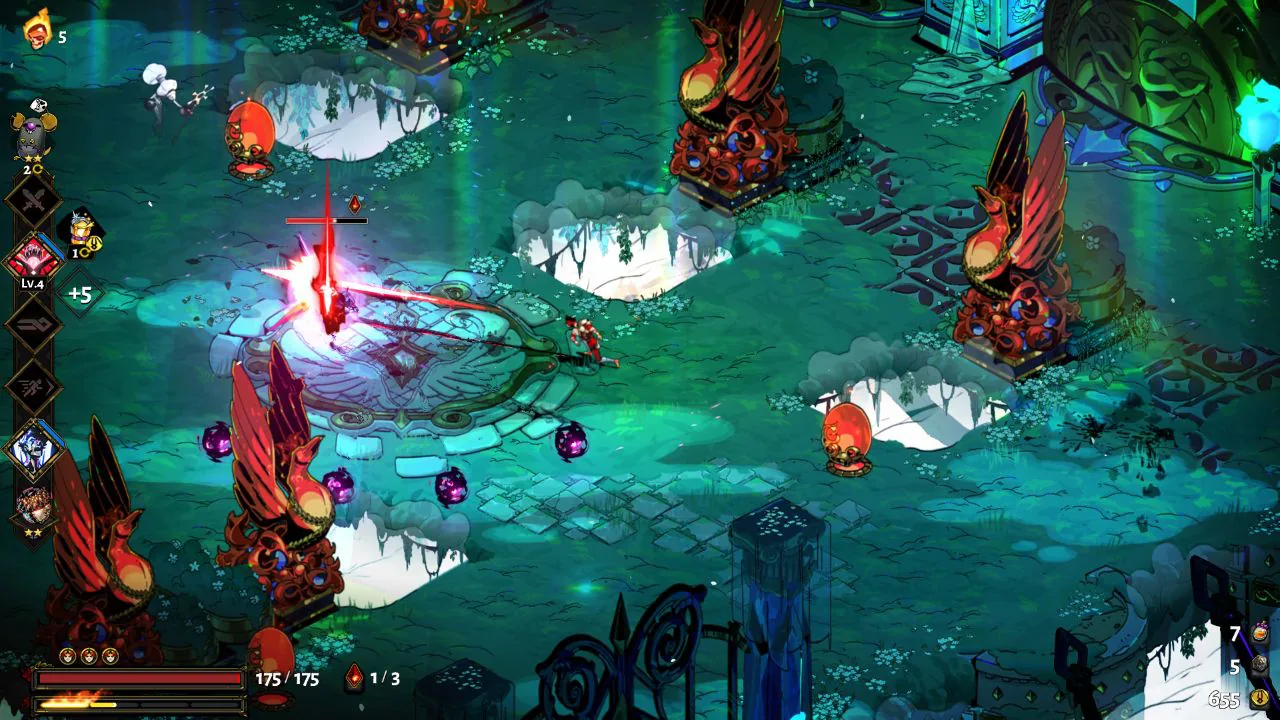
Cartoon
Cartoon or casual art style includes both hand-painted and low-poly options. Sometimes artists draw the textures for such graphics by hand, and sometimes do not use textures. Features of this style are colourfulness, exaggeration of accents, relative simplicity, and non-standard proportions. This style includes many sub-styles, the most famous of which is the voxel style.
Voxel is a kind of 3D pixel art in which everything consists of 3D cubes of the same color. This style is mainly used in simple casual games, puzzles, and games for children. Developing a cartoon game is very fast as developers do not need to stick to realistic standards, and its colorful and clear graphics are an excellent attention grabber. Some games created using a casual art style are LittleBigPlanet and Fortnite.
Read More: Hyper-casual Game Art
The Most Popular Art Styles for Games
Over time, the popularity of art styles in games may change, influenced by game art trends and player preferences. However, there are several art styles that have gained popularity in the gaming industry, like:
- Realism
- Cel-shading
- Pixel Art
- Low-Poly
- Hand-Painted Art
Modern Video Game Art Styles
In the realm of visual game art, modern art includes a wide range of styles that emerged from the late 19th century to the mid-20th century. Here are a few prominent modern video game art styles:
- Minimalist Art
- Postmodernism
- Pop Art
- Surrealism
- Abstract Expressionism
Read More: A Guide to Minimalist Game Art Style
How to Choose an Art Style That Fits Your Game?
Here are some tips for choosing an art style that fits your game:
– Consider the game genre and target audience. Certain art styles are more common or expected for different game genres. For example, pixel art for retro platformers or cell-shaded graphics for family-friendly games. Think about what visuals your target players will find appealing.
– Decide on the overall mood and atmosphere you want to create. A lighthearted, cartoonish art style suits a casual or silly game, while a gritty, realistic style fits a serious or intense game. The art should match the tone.
– Look at your game mechanics and gameplay. The art should complement and not conflict with the actual gameplay. For example, minimalist visuals help highlight puzzle mechanics, while lush graphics suit exploration games.
– Factor in your team’s artistic skills and technical capabilities. Avoid art styles that would be too complex or challenging to actually implement with your resources. Go for something achievable.
– Research games with art directions you admire and think would work well. See what styles are currently popular within your genre. But don’t just copy – put your own spin on it.
– Concept some key visuals in different art styles. Bring an artist on board earlier to mock up character designs, environments, UI elements, etc. Compare how each style looks and choose what fits best.
– Consider scalability and versatility. Art that can work across platforms and capabilities is ideal. Test how it translates to low and high resolution.
Bottom Line
The art style is all the visual art we see when playing a game. There are two main types of video game art styles: 2D and 3D. 2D and 3D game art can be created in several different video game art styles based on the genre and type of the game. Every art style in video games carries advantages and disadvantages concerning visual aesthetics, technology, and gameplay. It also intensively affects the game’s immersion and public likability. So, we recommend you decide on your game’s art style after settling on the gameplay, creating an initial prototype, and testing it.
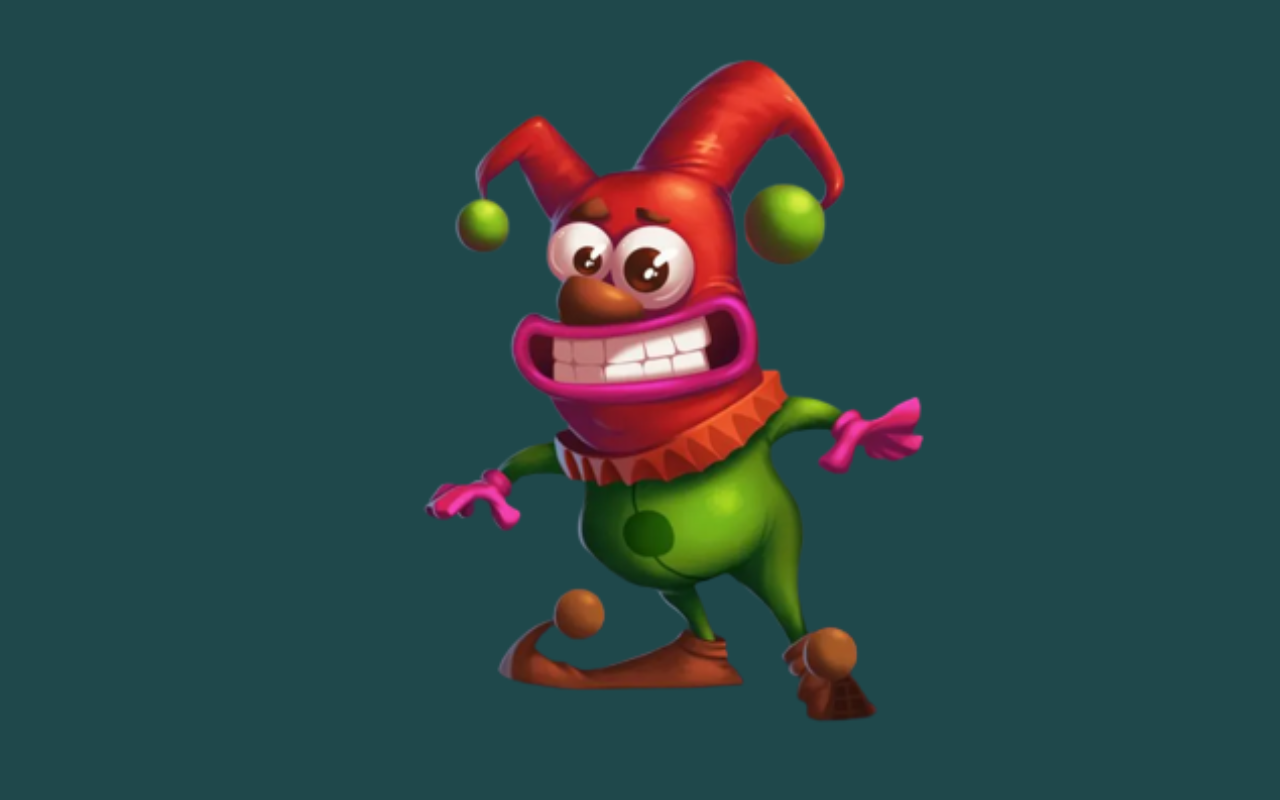
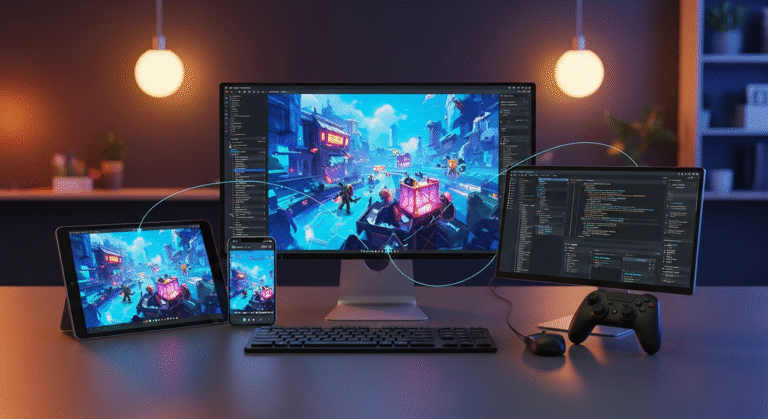









4 Responses
The article gives a nice high-level perspective on different game art styles. Looking forward to more posts like this!
Thank you for the encouraging feedback. Please feel free to suggest any other topics you would be interested in me covering in this conversational format.
The visuals, examples, and analysis provided are truly captivating. Your article has deepened my understanding of the artistic aspect of video games.
Thank you for taking the time to read and share your thoughts! Your feedback really encourages me.